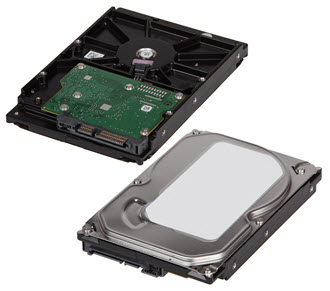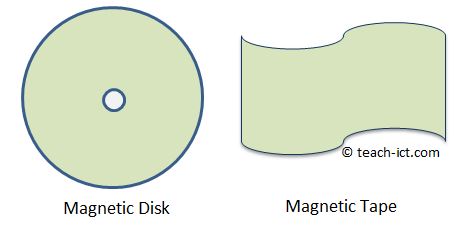3. Magnetic storage

This uses minute magnetic particles or 'domains' to store data. The direction of these magnetic particles represent individual 1s and 0s, forming binary data. They can be altered using a magnetic read/write head.
A hard disk is an example of a magnetic storage device. The particles on a hard disk form circular tracks around the disk. The disk spins around to allow the read/write head to access different parts of the track.
An alternative type of magnetic storage is a magnetic tape cartridge. Here, the particles form bands along the tape. The tape can be spooled out to access different parts of the track.

| Advantages of magnetic storage | Disadvantages of magnetic storage |
|---|---|
| Huge capacity, offers up to several terabytes per device. | Not as portable as other technologies. But external hard disks are commonly available, but they need to be treated carefully. |
| Low cost per gigabyte - magnetic tape is the cheapest, but hard disk is very low as well. | Hard disk has mechanical moving parts, so less rugged than solid state storage. |
| Hard Disk offers high speed data access | Data can be lost near strong magnetic fields, such as being too near a Hi-Fi speaker. |
| Hard Disk offers random access to data | Magnetic tape uses serial data access and so is very slow. |
| Magnetic tape can hold its data for up to thirty years in the correct environment. | Data read / write is not as fast as flash technology |
Challenge see if you can find out one extra fact on this topic that we haven't already told you
Click on this link: Magnetic storage examples
